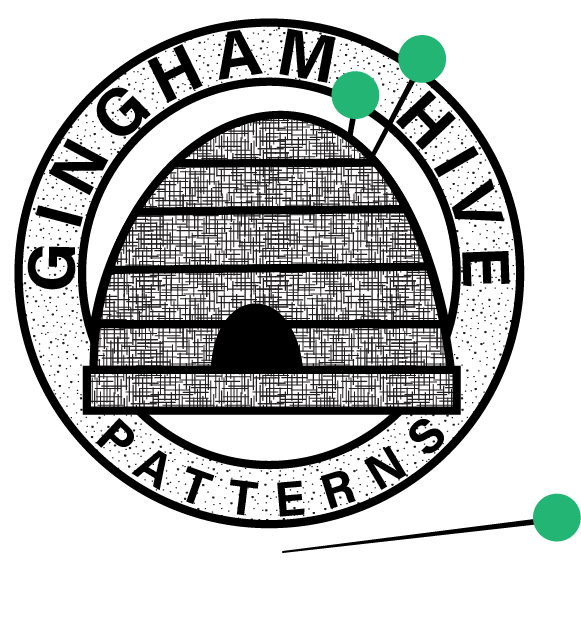Last September Made By Rae shared an Instagram a picture of a doodle quilt she had started and I could not get it out of my head. This year I’ve been focused on sewing apparel so I wanted to translate it to a wearable + washable garment. I added it to my make nine grid for 2019 with vague ideas of starting, but when Katie Kortman announced #sewhappycolor I knew this would be the perfect motivation to jump into this quirky project.

As far as I could tell by my research (aka zooming in on progress pictures from Little Pincushion Studio‘s beautiful Instagram feed) they are raw applique quilts. I wanted to find another method for constructing my top so the raw edges would be sandwiched inside and more durable during washing. I initially hoped to do some curve paper piecing for this project but in my tests I could only get some of the corners to match accurately, and this project is all about those intersections! So I decided to do standard applique. Here is a light tutorial detailing how I created my top. **Official Warning** this top took a lot of time to create. Like a super silly amount. This is a “little did she know…” scenario. Proceed with caution!
I started by practicing some doodles on scratch paper. It actually helped to hold the top of the pencil to let the lines be more organic so I wouldn’t over think where I was going. Visually I wanted most of the excitement on the bottom half of the shirt, as well I tried to keep the doodles on a larger scale.
Once I had some ideas in mind I pulled out a simple boxy top pattern (I traced an old rtw top here) and again used pencil to doodle. I traced the final doodle with a marker and numbered each piece. The background is one solid piece. I have a second tracing for the back (not pictured) where a few of the shapes continued to the back.

Next, I used tracing paper to trace each numbered pattern piece separately and then I used a clear quilting ruler to trace a quarter inch onto each pattern piece. Number as you go to help keep things organized. We are finally ready to cut out fabric! It was so hard deciding which colors to use where! I had bought a stack of small cuts of quilting cottons, but I wish I had gotten a few more. For the background color, I cut two full pattern pieces for both the front and back. I wanted the piece to have some texture (like a double cloth) when I quilted it.

I didn’t want any one color touching itself. I laid out the pieces as I went to watch out for this as well as to get excited to push forward. It was either going to be a hot mess or super fun.

I decided to baste stitch slightly less than a quarter inch around each piece to make ironing all those curves so much easier.

To aid ironing pretty curves clip on the rounded edges, and then press the pieces using the stitch lines as your guide. Keep your pattern pieces nearby as you iron. You will want to make sure you are pressing under on the correct side or you’ll have a backwards pattern piece. Below is an example, notice the stitches should not be visible from the right side.

Is anyone still here? If you finished your stack of ironed pattern pieces, congratulations! You are neat. I then took two pieces at a time right side together, pinned the corners and then pinned as I manipulated the curves. I hand basted the pieces together. You will have puckers here and there, but as long as the corners look tidy the quilting later will tidy things up.

Once you’ve got all the pieces joined give it another good press. Fabric shifts and your pieces may not line up 100%, but that’s okay. As long as the discrepancies can be sewn into a seam or under a hem it will be fine.

As I chose to do a lining, I sewed the should seams separately for each. I then joined the front bodice and lining by sewing right sides together around the neckline. Once I flipped the lining inside it was time to start pinning–just as you would when quilting. The quilting will take some time. By some, I mean a ton. It’s time intensive, but I think the quilting adds so much texture and dimension to this project! Total game changer. I started in the middle and worked my way out, always sewing in the same direction to keep fabric from puckering or shifting. I did 1/4″ matchstick style quilting, and I think if I were to do it again I’d do them a little farther apart.

Once I got through quilting the front and back I did french side seams, rolled the cuffs on the sleeves, and hand stitched the bottom hem.

I’m glad to have the push from #sewhappycolor to put an idea to fabric and see it through! I’ve already got more ideas for some fun color-blocking + doodles, but first I have some queued projects to finish!

Incredible!!! Just incredible!! I will
Be bookmarking this to try and make my own (tunic perhaps? Based on the wiksten?) this spring!